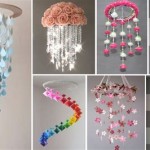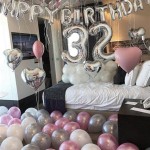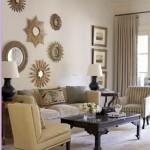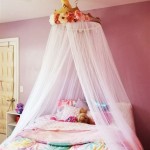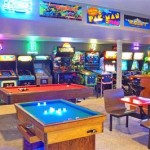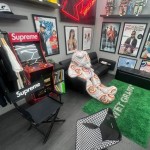How To Decorate an Extra Long Mantelpiece
An extra long mantelpiece presents a unique opportunity to create a striking focal point in a living space. However, its extended length also introduces specific decorating challenges. Successfully styling a large mantel requires a thoughtful approach that balances visual appeal with intentional design choices. This article provides a comprehensive guide to effectively decorating an extra long mantelpiece, ensuring it enhances the overall aesthetic of the room.
Before commencing any decorating project, a clear understanding of the mantelpiece's relationship to the surrounding room is crucial. Assess the architectural style of the fireplace and the existing decor of the room. The mantelpiece's design should complement both. A modern fireplace might benefit from minimalist decor, while a more traditional fireplace could accommodate a more ornate arrangement. Consider the height of the ceiling, the size of the room, and the color palette when making decorating decisions. A balanced and harmonious design scheme is essential.
Understanding Scale and Proportion
Scale and proportion are paramount when decorating an extra long mantelpiece. Given the extended length, small, scattered items will appear insignificant and lost. Conversely, overly large items can overwhelm the space. Therefore, a careful selection of objects in varying sizes is necessary to create visual interest without disrupting the overall balance.
The central element of the mantel display is often a large piece of art or a decorative mirror. This central focal point should be proportionate to the length of the mantel. A general guideline is to choose an item that's approximately two-thirds the length of the mantel. This prevents the central piece from feeling either too small or too dominant. The height of the central piece is also important; consider the height of the ceiling and the size of the room when making this selection. A tall, narrow piece might be suitable for a room with high ceilings, while a shorter, wider piece might be more appropriate for a room with lower ceilings.
Flanking elements are essential for balancing the central piece. These elements can include candlesticks, vases, sculptures, or decorative boxes. Varying heights and textures among these objects is crucial to prevent a monotonous look. Grouping items in odd numbers (three or five, for example) often creates a more visually appealing arrangement. Avoid placing identical items at each end of the mantel, as this can lead to a symmetrical and predictable design. Instead, consider using similar items with slight variations in size, shape, or color to create visual interest.
Maintaining a sense of visual weight is also important. Balance heavier items on one side of the mantel with lighter items on the other. This doesn't necessarily mean matching items precisely; it means considering the overall visual impact. For example, a large, dark-colored vase could be balanced by a grouping of smaller, lighter-colored objects. The goal is to create a visually balanced arrangement that doesn't feel lopsided or uneven.
Negative space, or empty space, is an important design element often overlooked. Cluttering the entire mantel with objects can create a visually overwhelming and chaotic look. Leaving some empty space allows the eye to rest and appreciate the individual items on display. Strategically placed negative space can also enhance the overall sense of balance and proportion. Deliberately leaving sections of the mantel bare can create a more sophisticated and curated aesthetic.
Implementing Layering and Texture
Layering and incorporating various textures are key to adding depth and visual interest to a mantel display. Flat, one-dimensional arrangements can appear boring and uninspired. Layering involves arranging objects in front of and behind one another, creating a sense of depth and dimension. Texture refers to the surface quality of the objects used; incorporating different textures adds tactile and visual interest.
Begin layering by placing the largest items towards the back of the mantel, near the wall. This could include the central piece of art or a tall vase. Then, gradually introduce smaller items in front of the larger pieces. Overlapping objects slightly can help to create a sense of depth and visual connection. Avoid lining up all the objects in a straight line, as this can look too formal and static. Instead, experiment with different arrangements to find a visually appealing composition.
Introduce texture by incorporating objects with different surface qualities. Combine smooth, polished surfaces with rough, matte surfaces. For example, a smooth glass vase could be paired with a rough-textured stone sculpture. Consider using natural materials, such as wood, stone, or metal, to add warmth and character to the display. Fabric elements, such as draped scarves or small rugs, can also add texture and softness. The juxtaposition of different textures creates visual interest and adds depth to the overall design.
Consider the use of metallics to add a touch of glamour and sophistication. Gold, silver, or bronze accents can be incorporated through candlesticks, picture frames, or small decorative objects. Metallics reflect light and add a subtle shimmer that can enhance the overall aesthetic. However, avoid overusing metallics, as this can create a gaudy or overwhelming look. Use them sparingly to add a touch of elegance and visual interest.
Greenery is an excellent way to add life and texture to a mantel display. Incorporate plants, flowers, or branches to bring a natural element into the space. Fresh flowers can add a touch of color and fragrance, while succulents or potted plants can provide a more long-lasting and low-maintenance option. Consider using different types of greenery with varying textures and colors to create a visually dynamic arrangement. Trailing plants can add a sense of movement and softness, while upright plants can add height and structure.
Developing a Cohesive Theme
Establishing and maintaining a cohesive theme is crucial for creating a visually appealing and harmonious mantel display. A theme provides a framework for selecting and arranging objects, ensuring that the final result is both aesthetically pleasing and personally meaningful. A theme can be based on a specific color palette, a particular style, or a personal interest.
A color-based theme involves selecting a specific color palette and using objects that fall within that range. This could involve using monochromatic colors, complementary colors, or analogous colors. Monochromatic color schemes use different shades and tones of a single color, creating a subtle and sophisticated look. Complementary color schemes use colors that are opposite each other on the color wheel, such as blue and orange, creating a bold and vibrant look. Analogous color schemes use colors that are next to each other on the color wheel, such as blue, blue-green, and green, creating a harmonious and relaxing look. When selecting a color palette, consider the existing colors in the room and choose a palette that complements the overall aesthetic.
A style-based theme involves selecting a specific design style and using objects that reflect that style. This could involve using a modern, minimalist style, a traditional, ornate style, or a bohemian, eclectic style. A modern, minimalist style emphasizes clean lines, simplicity, and functionality. Objects used in a minimalist display are typically understated and functional. A traditional, ornate style emphasizes elaborate details, rich textures, and classic forms. Objects used in a traditional display are often antique or reproduction pieces. A bohemian, eclectic style embraces a mix of different cultures, styles, and eras. Objects used in a bohemian display are often unique and personal, reflecting the individual's travels and experiences.
A personal interest-based theme involves using objects that reflect a specific personal interest or hobby. This could involve using objects related to travel, art, music, or nature. For example, a travel-themed display could include souvenirs from different countries, maps, and travel guides. An art-themed display could include paintings, sculptures, and art books. A music-themed display could include musical instruments, sheet music, and album covers. A nature-themed display could include shells, stones, plants, and dried flowers. When creating a personal interest-based theme, consider the potential for sparking conversation and sharing your passions with others. This is especially effective around the holidays, for example, Christmas or Thanksgiving.
Regardless of the chosen theme, consistency is key. Ensure that all the objects on the mantelpiece contribute to the overall theme and that there are no elements that feel out of place. Regularly re-evaluate the display and make adjustments as needed. This is particularly important when introducing new objects or when the surrounding decor changes. A well-maintained and cohesive mantel display can serve as a beautiful and engaging focal point in the room.

Long Mantels Go The Distance

3 Ways To Decorate Extra Wide Fireplace Mantels Examples Included Designed

Long Mantels Go The Distance

Decorating A Long Mantle With Wall Mounted Fixtures

How To Decorate A Long Mantel Fireplace Mantle Decor Decorating Ideas

Decorating Ideas For A Long Mantel Decor Fireplace Mantle
How To Style Your Fireplace One Kings Lane Our Blog

Building An Easy Modern Fireplace Mantel Young House Love
Easy Fireplace Ideas For The Warmer Months

Best Fireplace Mantel Proportions How Not To Muck It Up Laurel Home
Related Posts

